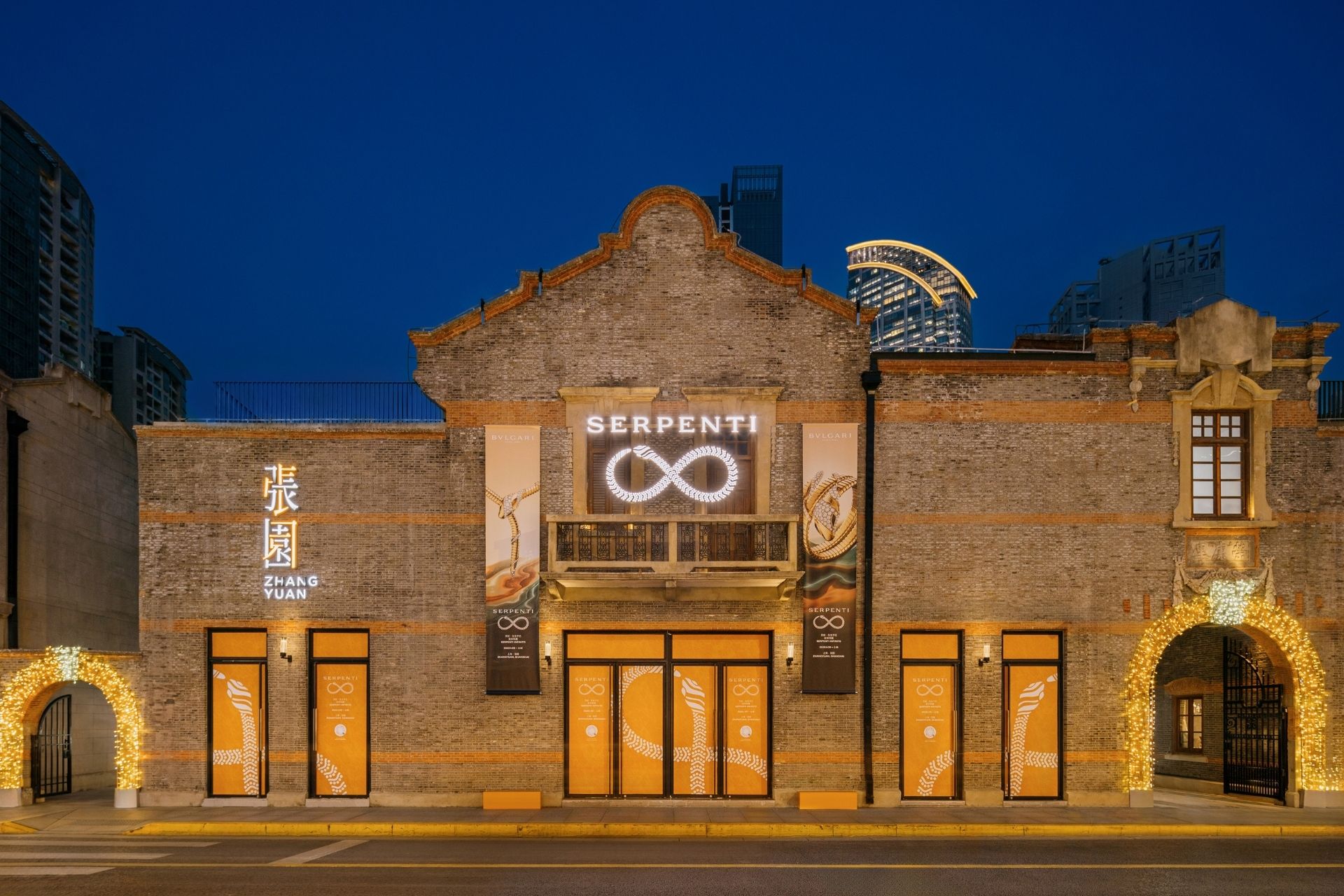As consumers become more and more digitally savvy and comfortable interacting with artificial intelligence online, the luxury industry can no longer just observe this situation from afar. Digital Luxury Group’s social media lead, Frédéric Huber, reports.

When Apple launched Siri back in 2010, it was one of the first times that the public had direct access to a helpful artificial intelligence-based assistant. Since then Siri and her sisters Alexa, Cortana, and others, have come a long way. These virtual personal assistants led the way for the introduction of AI on social messaging platforms. And it was in April 2016 when Facebook launched its Messenger Platform, and the ability for businesses to create their own chat experiences, that the term “chatbot” started to hit the public’s vernacular in full force.
Facebook explains chatbots as applications that “can provide anything from automated subscription content […], to customized communications […], notifications, and live automated messages all by interacting directly with the people who want to get them.” Concretely, chatbots are created with the goal to answer people’s questions without human intervention, using pre-defined scripts to allow companies to automate tasks and improve real-time engagement.
Thanks to these advances, millions of businesses worldwide have the opportunity to engage directly on social media with their audiences and build one-to-one relationships that provide value for their customers and allow brands to add an additional layer to their Social CRM strategy.
So, how can the luxury industry build on this opportunity to provide their customers with an online experience that supports their offline activities? Here we take a look at five luxury brands that are setting the pace of social media bot usage.
Burberry

Always quick to leverage new technologies and among the most digitally innovative luxury brands since digital became a “thing,” Burberry launched its chatbot during New York Fashion Week in September 2016.
Originally, the bot allowed fans and customers to go behind the scenes of their September collections and gave fans the option to shoot the looks they liked and then shop the pieces from the fashion show directly from the app. Additionally, fans could also see the inspiration that went behind creating the collection and the show.
As a digital leader, Burberry went one step further, using its messenger bot to send push notifications to every person that had previously interacted with it. Last November, it gave the option to watch the Burberry holiday film, explore gifts and pre-order pieces. This February the brand invited fans through its chatbot to follow their runway show live on Facebook and shop the new collection.
The bot is now offering a wide variety of services, from the ability to ask Customer Service a question to being able to browse and shop the collection. The bot also offers a live chat with a Burberry consultant and even a store locator function that allows you to book an Uber ride to take you to Makers House to see the brand’s exhibition.
By sending push notification messages to its followers and everyone that interacted with the brand through Messenger, Burberry is able to remain visible to its core audience and most loyal fans and to provide them with unique online experiences.
Tommy Hilfiger

The first major fashion brand to experiment with chatbots, Tommy Hilfiger introduced it during the New York Fashion Week in September 2016 when the brand announced its partnership with supermodel Gigi Hadid. The main goal of the bot was, and still is, to drive traffic to their website and create a personalized customer experience around their new collection.
The bot greets the fan and directly introduces the TOMMYxGIGI collaboration. The user is given three options to orientate the conversation: get fashion styling advice, browse the full collection, or take a look behind the scenes of the latest fashion show starring Gigi Hadid.
If you choose to “find your new look”, the bot will ask you a handful of questions about your style, the colors or prints you like, your favorite fashion piece, and even for which occasion you are looking for style advices. They then suggest you a few looks matching your answers. You don’t like the suggestions? No worries, you can easily change your look, discover more, or shop the pieces. Everything is designed within Messenger.
If you want to shop the look, you’ll just have to give your country, choose your size and the bot will immediately tell you if it is available. If not, you can still take a look at the rest of the collection. If it is, you can easily review your cart before checkout, with the bot sending you a recap with mini video showcasing the products you selected.
Designed for young millennials and fashion-savvy Gen Z, the tone of voice used by the bot is appropriately friendly, casual and playful. The bot chats with you as if there was really someone behind it trying to advise you during the experience. Knowing full well this audience’s interest in celebrities and influencers, Tommy Hilfiger don’t hesitate to feature supermodels and “Instagirls” like Gigi, her sister Bella, or Joan Smalls, when browsing runway looks.
Audemars Piguet

Among the leading luxury watch companies in the world, Audemars Piguet was among the first watch brands to introduce a chatbot last December. The bot allows users to get a glimpse of the brand’s Swiss roots. Fans are given the option to choose between visiting Audemars Piguet’s home, which launches a video of the snowy Vallée de Joux, or to browse its “winter” collection, which displays a list of the brand’s most popular timepieces set in a wintery environment.
The user can then choose between exploring a specific model or finding the closest boutique to go see it in person.
The bot is well-executed, with nice visual elements, strong and powerful wording, and very on brand overall with Audemars Piguet’s DNA, however, it doesn’t offer as many options nor provide as much value and customer experience as others reviewed. Despite not being as rich feature wise as fashion houses’ bots, Audemars Piguet’s bot is a nice start and at the very least cements the brand’s position as an digital experimenter in the luxury watch space.
Jaeger-LeCoultre

In the same industry, Richemont’s Jaeger-LeCoultre decided to focus its bot on customer service by acting as a personal assistant. Clients and fans can use the bot to request help in choosing a strap or a watch. The strap selector is basic, simply redirecting people to Jaeger-LeCoultre’s official strap finder on the website. The watch selector is integrated much better within the app and includes various steps, which leads to an online purchase or store locator search.
On top of the main selector function, the bot also offers some nice-to-have features, such as #watchaddict that provides links to the brand’s Instagram and YouTube channels, the ability to get the official catalogue of products, or contact the brand directly on Messenger.
Given the luxury watch industry’s sometimes slow adoption of new technologies, the Audemars Piguet and Jaeger-LeCoultre bots send a welcome sign to the industry in general, that shows that even highly-exclusive and traditional brands can experiment with new features and bring some innovation to the way they engage with their consumers.
Estée Lauder

Estée Lauder launched a shopping bot for the holiday season to bridge the gap between online and offline. The brand partnered with No.6 Mortimer, a pop-up store based in London selling beauty products. This chatbot gave the opportunity to anyone within one hour of London to browse products, shop and buy various presents by simply messaging the bot. The bot was really straightforward to use, simple, with limited functions and rudimentary vocabulary, but it worked well and was perfect for someone looking for that last-minute inspiration to buy a gift to its loved-ones. Once the choice was made, customers could choose between picking-up the gift directly in the store or different delivery options, including express delivery.
Luxury consumers already spend a huge part of their time on social media platforms, and more and more time on messaging apps such as Facebook Messenger, Whatsapp, WeChat, and the like, so it’s no surprise that brands which pride themselves on their attentiveness to customers would follow suit.
Chatbots offer a unique way to connect with customers and when done correctly as seen in the examples above have the opportunity to provide best-in-class online experiences, generate positive clients perception and word-of-mouth, and provide opportunities that lead to sales.









